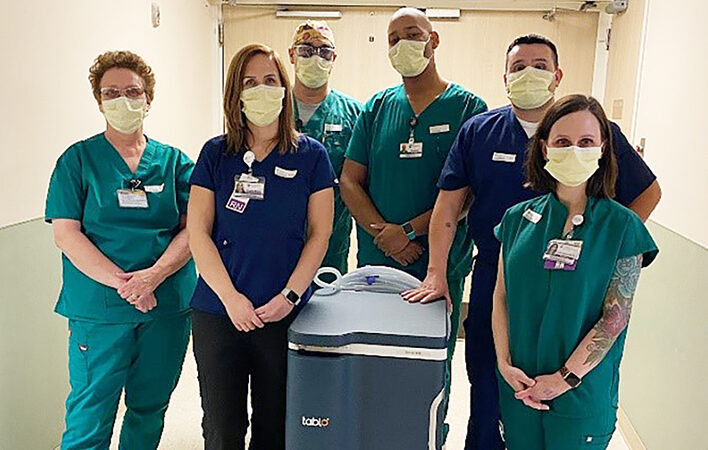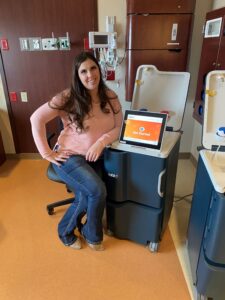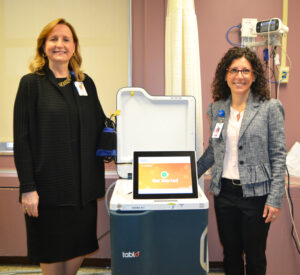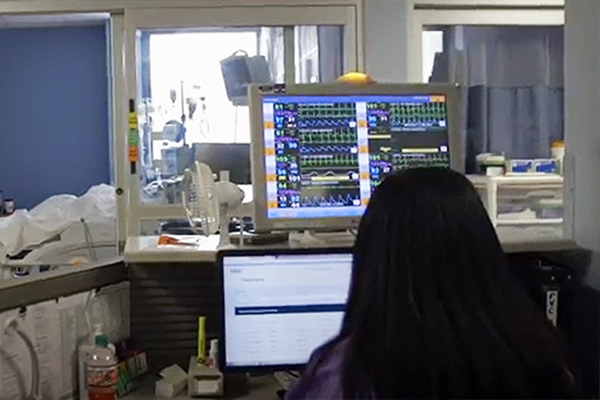How to Implement a Competitive Dialysis Program: 3 Tips from 3 Experts

Summary
Leaders at health systems across the country are innovating a notoriously costly and complex service line – acute dialysis – to gain a competitive edge. Here are the three key elements that three leaders consider essential.
Many of the largest health systems, albeit diverse in many ways, have a lot in common. As national institutions of care that are expected to always be open and available to all patients, they are facing escalating operational pressures. This includes in the area of kidney dialysis – a large, expensive and long-unchanged sector of healthcare. In response, over the past few years health network leaders have taken bold steps to overhaul resource-intensive acute dialysis programs across their networks.
But how have they been able to accomplish this monumental task?
Their successes all involve having the right people in the right place at the right time. Here, health system leaders describe three key elements that they and their teams have employed to convert acute dialysis service lines to an in-house model with the first-of-its-kind Tablo® Hemodialysis System, leading to a positive impact on cost, staff resourcing and patient experience and outcomes.
#1: Enlist a Nurse Leader/Director to Oversee the Conversions
A seasoned nurse leader can serve as an anchor for the entire project, helping to spearhead policies, procedures, trainings, implementations and best practices, and inspire and build staff satisfaction across a network.
Kasi Moore, MSNI, RN, Dialysis Market Director at HCA Healthcare Mountain Division, has a passion for dialysis and for bringing out the very best in her nursing teams. Over the last two years, she has worked alongside VP of Nursing Operations, Melinda Patterson, DNP, MSN, RN, NE-BC, to lead a large-scale conversion to an in-house Tablo model in the division’s ICUs and dialysis units across Utah, Idaho and Alaska. Moore has built out robust dialysis departments, each over the course of just a few weeks, including researching and writing the extensive regulations involved, and interviewing and hiring nursing teams. She has also worked to streamline dialysis nursing and ICU care following Tablo implementations.

As of this April, seven out of 11 of the division’s hospitals have successfully standardized dialysis services to an almost exclusively all-Tablo model, with five of them going live simultaneously. As a result, the division has decreased costs and boosted treatment volume, among other benefits. Moore and her team are passionate about spreading awareness and educating providers about their exceptional Tablo experience, and inspiring conversions in their hospital network—and beyond.
“It really helps a lot that dialysis is standardized across the division,” says Moore. “We are proud to be leading the way forward in our region.”
Read more about the division’s strategy here, and the $450,000 projected annual savings reported by one of its facilities, St. Mark’s Hospital in Utah.
#2: Start with a Test Site
By selecting one facility to serve as the first conversion model, a comprehensive and successful implementation plan can be crafted and repeated across facilities.
Starting with a successful conversion test run can set the stage for future success. Just ask PAM Health, a network of 41 long-term acute care (LTAC) hospitals, inpatient rehabilitation facilities and other services across 12 states. In 2020, in the midst of COVID, leadership made the decision to exit all its third-party outsourced dialysis contracts and convert all dialysis services to a full in-house service line with Tablo.
REQUEST A DEMO
Get in touch with us! We’d love to show off Tablo and learn more about your dialysis program.
They started with a successful conversion test at PAM Health Specialty Hospital of Hammond in Louisiana. Once leadership saw the excellent 90-day data and outcomes from the Hammond implementation, they began strategizing on a nationwide, quarter-by-quarter, full-service line conversion plan. About 20 of its hospitals have successfully converted their dialysis programs to date, with many more planned over the coming months.
“It was a ‘safe zone’ for us to embark on something as big as a full-service line like dialysis. We encountered very few hurdles with that launch, it was more of a short learning curve for the team. We got through that roll-out within our forecasted timeline, even with the team handling the influx of COVID-19 patients.” says Jerry Elenbaas, PAM Health’s Division President of Hospital Operations. Read more about PAM Health’s successes here.
#3: Streamline Training Between Facilities
Having nurse leaders at the most recent implementation sites work with already-trained nurses from experienced sites helps the teams to quickly build their confidence in the new technology.
A well-honed, engaging, skill-building training program is a critical tool for network-wide success when reinventing acute dialysis care models, and introducing nursing staff to a new technology after decades with little innovation. The Catholic Health team in western New York has used this strategy extensively as it converted several of its hospitals from a long-established but costly in-house dialysis model to a program consisting solely of the Tablo Hemodialysis System.

Last September, the two largest hospitals in the network, Mercy Hospital of Buffalo and Sisters of Charity Hospital, became the first in the region to bring in Tablo to replace its existing dialysis machines. Leadership then converted two additional network hospitals, Kenmore Mercy and Mount St. Mary’s, to Tablo in December, with training and support from Outset Medical and Mercy Hospital of Buffalo and Sisters Hospital nursing teams.
Christina Tobin, DHA, RN, OCN, NEA-BC, Vice President of Operations at Mercy Hospital of Buffalo, served as the clinical lead for the Tablo implementation program throughout the network. Working with the nursing staff at each facility on setup and training, and with dedicated support from Outset Medical, team engagement and skill-building was accomplished successfully. Nurses at the most recent implementation sites worked with already-trained nurses from Mercy Hospital and Sisters Hospital to quickly build their confidence in Tablo.
“The all-in-one capabilities of Tablo offer significant benefits over our previous insourced and outsourced machines, while offering a safe, streamlined and cost-effective dialysis process for nurses and other caregivers,” she says.
As seen in these three real-world examples, gaining fluidity and control over acute dialysis services can have a powerful ripple effect across hospital networks, and patient care. Nurse leaders can be empowered by leading multiple innovative program launches, facilities bringing dialysis in-house can be role models for others in their network, and device training, that is much simplified and generally less resource intensive with Tablo, can be optimized and standardized.
Image at the top of the page: CHRISTUS Southeast Texas Hospital team (read the network’s Tablo conversion success story here).

